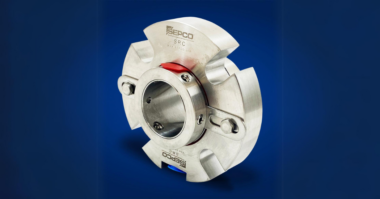End-users of process industries in the U.S. have been putting an increasing emphasis on minimizing fugitive emissions in recent years. The newly elected Democratic U.S. government in 2021 has officially re-entered the international Paris Agreement, empowering EPA and enforcing Obama-era environmental regulations such as the Clean Air Act. Fugitive emission from process valves is a key concern amongst the user/operators struggling to lower the plant’s total carbon footprint. Also, these emissions account for a significant loss of both energy and media in the process. End-users are constantly looking for alternative solutions to limit these emissions, especially in the existing plants.
Inherent problems with Pressure Relief Valve:
A conventional Pressure Relief Valve (PRV) has been the go-to technology in process plants to vent overpressure or as a final line of safety to avoid a catastrophic event. The cost-effectiveness and the autonomous nature of operation have made PRV a prevailing technology for plant safety over the years.
However, PRVs are riddled with inherent problems during operations, often leading to leakages and excess discharge or worse! In a venting application, improper seating or prolonged venting often leads to higher energy loss or emission. In a typical process plant housing hundreds of PRVs, the amassed leakage figures lead to a significant loss in energy and emissions.
To minimize the apparent losses that occur due to leakages caused by various factors in a plant, conventional leak detection and inspection techniques, such as visual and manual testing with handheld devices and infrared thermal scanners, are carried out periodically. However, these techniques are not carried out very frequently enough as they involve immense time, cost, and physical labour. Also, due to the relatively higher probability of malfunctions in PRV, the traditional inspection techniques are not very effective in managing PRV-related losses.
Ideally, for dynamic inspection of PRV operations, it is essential to monitor both the frequency and the flowrate of leakages due to seating malfunction. Installation of infrared cameras in the process plants may enhance visual leakage detection capabilities. However, it is limited only to external venting applications, while inline leakages (vent to flare) and metering remain untracked.
Digitalization of Pressure Relief Valve Operation:
Digitalization is the new wave sweeping across process industries worldwide. The advancements in active condition monitoring technology, remote maintenance, servicing, and support are just a few of the newly introduced aspects of valve asset performance management with the plant’s digitalization.
To effectively limit PRV malfunction and reduce the overall carbon footprint in process industries, there is a need for a complementing smart device for real-time monitoring and alarm management. Some of the digitalization enabling hardware currently available for the real-time PRV condition monitoring market are non-intrusive acoustic transmitters for leakage detection, lift/position monitor or differential pressure flow transmitters for identifying volumetric release. These devices are battery-operated, wirelessly enabled, and easily retrofitted to transmit PRV’s operational data such as event timestamp and duration. When an alarm is triggered, immediate or planned corrective action for maintenance and repair operations can be taken based on the event’s severity.
In conjunction with a powerful cognitive engine and interactive user interface, the transmitted PRV operational data can be leveraged for metering, correlate PRV lifting against process and equipment events, identify the root cause of overpressure, event alert management, overhaul support and predictive analysis.
Digitalization of Pressure relief valve (PRV) operation is a growing trend among end-users, especially in the refining, chemical, power generation and oil and gas sectors. PRV digitalization is also projected as the next big solution to address the burgeoning need for lowering fugitive emissions and enhancing plant efficiency by eliminating leakages and minimize losses.
ARC report on pressure relief valves and devices market study reveals which PRV technologies represent the largest share of the market, provides a detailed forecast on which regions will see the fastest growth, and explains how digitalization of PRV technology can enhance the overall efficiency and carbon footprint of a process plant, in detail. Also, ARC would like to help owner-operators assess where they are on their ‘Digital Transformation Journey’. As part of this effort, we have developed the following survey to help us quantify the “adoption level ” of each respondent’s company, compared to their peers, to optimize the maintenance frequency, safety checks and performance of their plant’s industrial valves.
Please consider taking a few minutes to respond to ARC’s survey
https://www.surveymonkey.com/r/YKPGWXK . If you have questions about the survey, please contact us at smukunda@arcweb.com.





Comments